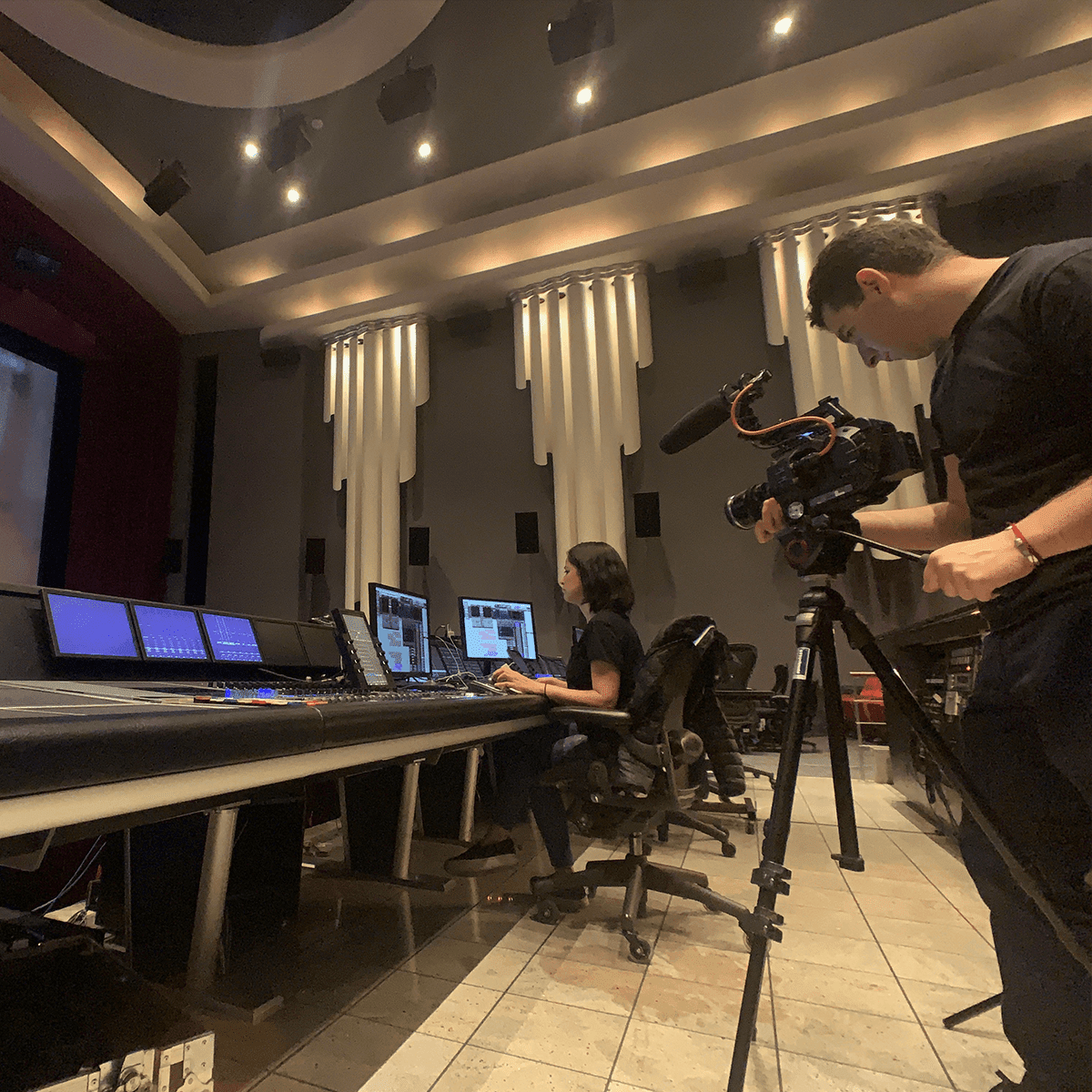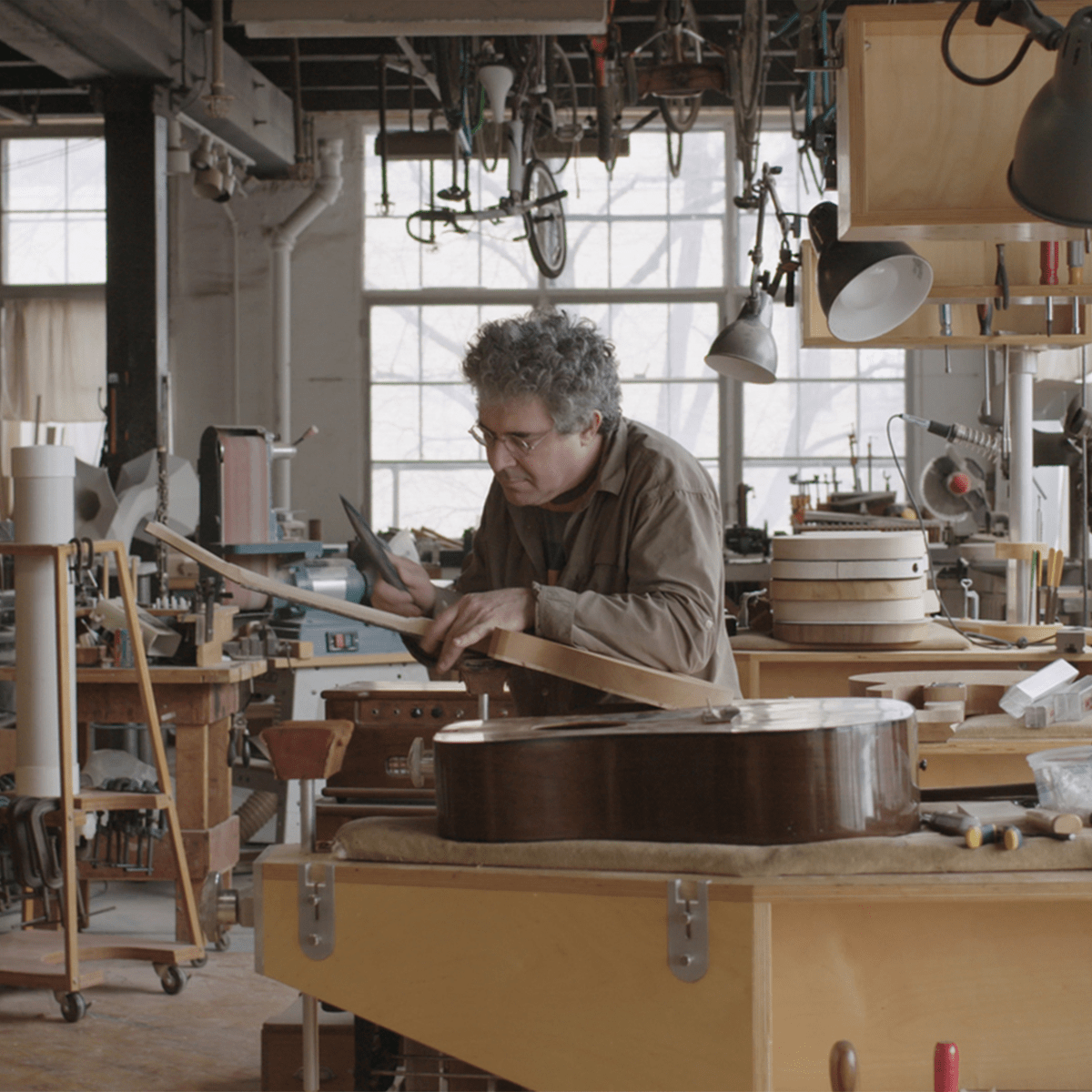Michael Coleman
Filmmaker and Cinematographer
Michael Coleman
Filmmaker and Cinematographer
Michael Coleman is an award-winning director and cinematographer and for over fifteen years has focused on making films about audio, music, and the creatives who bring them to life. His work has been featured in films including director Francis Ford Coppola’s Apocalypse Now: Final Cut, director Denis Villeneuve’s DUNE, director Brett Morgen’s The Rolling Stones: Crossfire Hurricane, director Cameron Crowe and Producer Morgan Neville’s, Pearl Jam Twenty, director John M. Chu’s G.I. Joe: Retaliation, director Edgar Wright’s Scott Pilgrim vs. the World, director J.C. Chandor’s, All is Lost, director Michael Bay’s, Transformers: Dark of the Moon, director Nimrod Antal’s, Metallica: Through the Never and Aerosmith’s multi-platinum film, You Gotta Move.
Connect with Michael Coleman
THX Deep Note Trailer 2019 – Behind The Scenes
In his recent documentary, Michael Coleman takes us behind the scenes to show what it took to make the newly-released THX Deep Note Trailer celebrating their 35th Anniversary.




Documentary Filmmaker Comes of Age with SanDisk® Professional Storage
Perhaps one way to tell the difference between an amateur audio/videocreator and a professional is the number of external storage drives in his other closet. Michael Coleman has 19. He’s a professional.
Still, most of these drives, of which the largest is only 8TB, use older interfaces. Michael tends to focus more on craft and expertise within his cinematography and audio production niche than adopting the latest connection technology. While his many years in the field have drawn major film studios as clients, the relatively low capacity and bandwidth demands of audio and HD video allowed him to carry on with humble, often consumer-grade storage.
Careers evolve, though. Particularly since starting the SoundWorks Collection, an audio-focused profile documentary series in 2009, Michael’s dive into filmmaking has only reached deeper and placed more demands on his storage workflow.
"I'd been working with FireWire 400/800 for so long," he says. "I don’t think it really mattered until the past few years when I started shooting 4K. Then, storage became so much harder to grapple with because we were shooting so many more terabytes every year. I needed to future-proof, and I kept trying to find someone who could help me understand the best way to set up my system, to optimize storage and speeds."
Eventually, that quest led Michael to SanDisk® Professional and a vision for how to reshape his storage workflow in ways that would better enable him to tackle future data demands.
Early Days
Michael’s storage journey began in 2001 when he entered college. With his first introduction to studio equipment came instant fascination with audio and filmmaking. Back then, most Web-based video existed in formats such as Flash® or Windows Media®. Michael dedicated himself to learning everything he could about codecs, compression, and getting media out to people. Unlike so many others in his field, Michael became a "techie" before growing into being an artist.
"That time helped me understand a lot of the essentials," he says. "It was really eye-opening. I became a technology expert before I became a filmmaker because I found the tools so exciting."
Before finishing school, Michael stumbled onto the opportunity to help shoot a live concert in Birmingham, Alabama. He went to the nearest A/V store, dropped several hundred dollars, and walked out with a MiniDV camera. Less than a day later, he worked alongside eight other filmmakers on the concert and had his professional epiphany: He could freelance. He could actually make a living with a camera. Armed with a FireWire-enabled laptop, Michael launched his career and never looked back. In all the years since, he’s never been an employee for anyone but himself.
That’s not to say that there haven’t been potholes and object lessons along the way. Even in college, Michael had some bad experiences with external hard drive storage.
"That was just a nightmare," he recalls. "I lost so much stuff from school. Finally, I was like, ‘No. Never again.'"
Better Ways
Over the last couple of years, Michael has slowly grown more familiar with SanDisk Professional’s line of drives. Because he spends so much time in the field, his favored products have been various members of the G-DRIVE® family. The combination of ruggedness, pocket-friendly form factor, and capacity fit his on-the-go needs. One drive serves as his primary resource for footage, the other works as a backup, and the two travel back to his office along separate paths, just to be safe.
In general, the G-DRIVE products get Michael through a week of shooting. However, as his filmmaking continues to evolve with higher resolutions, more cameras, and increasing demands from clients for speedy turn-around, he knows that it’s time for his business to adapt and update. Michael doesn’t take such steps lightly. He’s largely skipped interfaces such as eSATA, USB 2.0, and Thunderbolt™ 1 because he doesn’t like stepping through technologies incrementally. He wants to jump into a solution and ride it out for a long time.
Today, Michael’s eye is on USB-C™. At last, he sees the opportunity to standardize on one connector across all of his devices and do so in a way that will scale from tomorrow’s Thunderbolt 3 all the way back to the FireWire 800 drives in his closet. At the same time, he knows that he needs to increase the efficiency of his data importing and exporting while also centralizing his online and (currently) offline storage into a single, ultra-capacious resource.
"What I need is something like a 48TB G-RAID Shuttle 8 storage solution…with USB-C," he says. "I totally fell for the G-RAID Shuttle 8 the first time I saw it. Having those two ev drive bays could really streamline my workflow, plus another six Enterprise class drives all configured with RAID protection will finally give me some peace of mind. I’ve been in the middle of jobs and had hard drives fall over. You lose all the data from that day. I need great products that are reliable and rugged because this is my business. I can’t afford to lose data. That’s why I’m set on using SanDisk Professional for my storage. A USB-C G-RAID Shuttle 8, whenever it arrives, alongside those portable G‑DRIVEs, will give me everything I need."
As of this writing, no specific multi-bay USB-C products have been announced by SanDisk Professional. If a solution becomes available, Michael plans on pouring all of his current online storage as well as his 19-drive archive into his dream storage tower to have lightning-fast ingestion, massive storage capacity, and the ability to organize and access an entire career’s worth of content within seconds.
He acknowledges that such an approach is and should be how professional creatives construct their storage strategies. When business is on the line, data needs to be accessible without delay.
"I can talk tech to people all day, but I needed a storage partner who understood how I work and designed products for my sort of workflow. SanDisk Professional gets the needs of today’s filmmaker"




SanDisk Professional Ambassadors are leaders in their respective fields who use SanDisk Professional products in their day-to-day work lives. SanDisk Professional Ambassadors are compensated for their participation.
SanDisk Professional external hard drives serve as an element of an overall backup strategy. It is recommended that users keep two or more copies of their most important files backed up or stored on separate devices or online services
